
Embracing Scottish Hospitality: Insider Tips for Travelers
Scottish hospitality embodies the essence of warmth, generosity, and genuine friendliness, creating an unforgettable experience for travelers. Rooted in centuries-old traditions of hospitality, Scotland welcomes visitors with open arms, treating them like long-lost friends rather than mere guests.
Travelers can expect to be embraced by the rich tapestry of Scottish culture, from the moment they set foot on its picturesque landscapes. Whether enjoying a dram of whisky in a cozy pub, sharing stories with locals in a quaint village, or being greeted with a hearty “welcome” in a bustling city, the warmth of Scottish hospitality is palpable at every turn.
Beyond the stunning scenery and historic landmarks, it’s the people of Scotland who truly make the destination come alive. Here are a few insider tips for you to know before going on that much-awaited Scotland tour.

1. How to greet and have conversations with locals
Greetings and Interactions:
When greeting locals in Scotland, a warm smile and a friendly “hello” or “hi” are always appreciated. Handshakes are common in formal settings, but don’t be surprised if you’re greeted with a hug or a kiss on the cheek, especially among friends and acquaintances.
Engaging in Polite Conversation:
Scottish people are known for their friendliness and love of conversation. When engaging in polite conversation, it’s important to be attentive and respectful. Ask open-ended questions about topics like local culture, traditions, and places of interest. Be prepared to share a bit about yourself as well, as Scots are genuinely interested in getting to know others.
Common Scottish Phrases and Expressions:
Learning a few Scottish phrases and expressions can go a long way in connecting with locals. Here are some common ones to get you started:
- “Aye” – Yes
- “Wee” – Small or little
- “Dinnae fash yersel” – Don’t worry
- “Bonnie” – Beautiful or attractive
- “Lang may yer lum reek” – May you live long and prosper
- “Braw” – Excellent or splendid
- “Haud yer wheesht” – Be quiet
- “Cheers” – Thank you or goodbye (often used when raising a glass)
Using these phrases will not only help you communicate more effectively but also show your appreciation for Scottish culture and language.
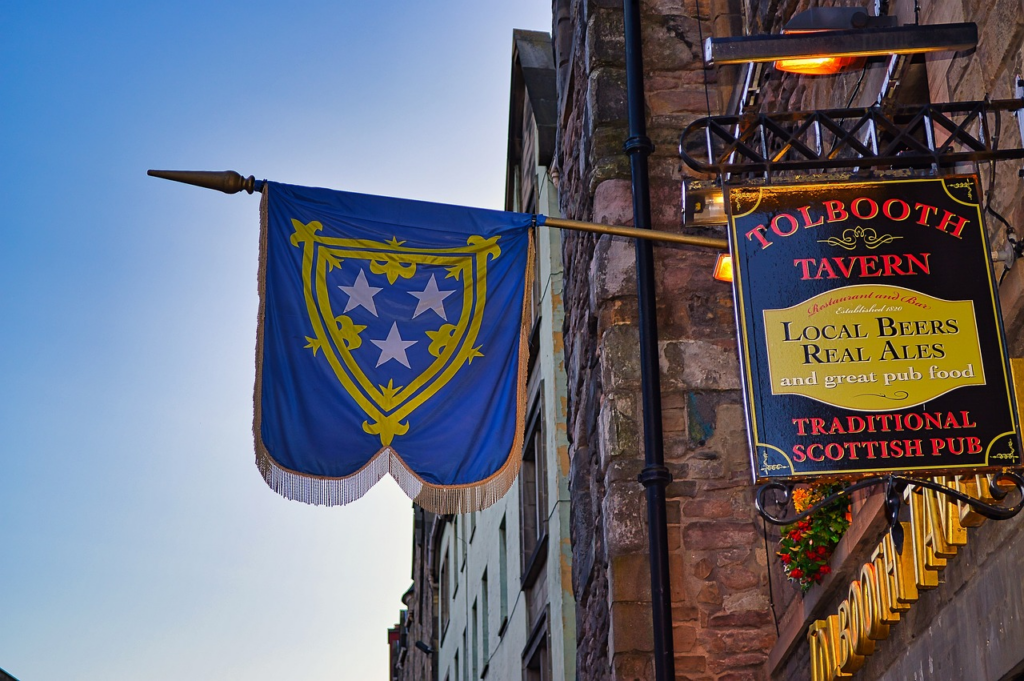
2. Pub Culture in Scotland
Pubs play a central role in Scottish social life, serving as hubs for community gatherings, lively conversations, and shared experiences. They are more than just places to grab a drink – they are institutions where locals come together to relax, unwind, and connect with friends old and new.
Pub Etiquette:
- Ordering Drinks: When ordering drinks at a Scottish pub, approach the bar and wait your turn. It’s customary to make eye contact with the bartender and politely state your order. If you’re unsure of what to try, don’t hesitate to ask for recommendations – Scots are usually more than happy to share their favorites.
- Tipping: Tipping in Scottish pubs is appreciated but not always expected. If you receive exceptional service, a small tip is a nice gesture. However, tipping isn’t as common or as substantial as in some other countries, so use your discretion.
- Engaging in Friendly Banter: Scottish pubs are known for their lively atmosphere and friendly banter. Don’t be shy about striking up a conversation with the locals – they’re often more than happy to chat with visitors. Just remember to be respectful and mindful of personal space.
- Pace Yourself: Scots enjoy a good drink, but they also know their limits. Pace yourself and drink responsibly to fully enjoy the pub experience without overindulging.
- Embrace the Atmosphere: Whether you’re in a cozy traditional pub or a trendy modern bar, take the time to soak in the atmosphere. Enjoy the live music, admire the décor, and savor the sense of camaraderie that permeates Scottish pub culture
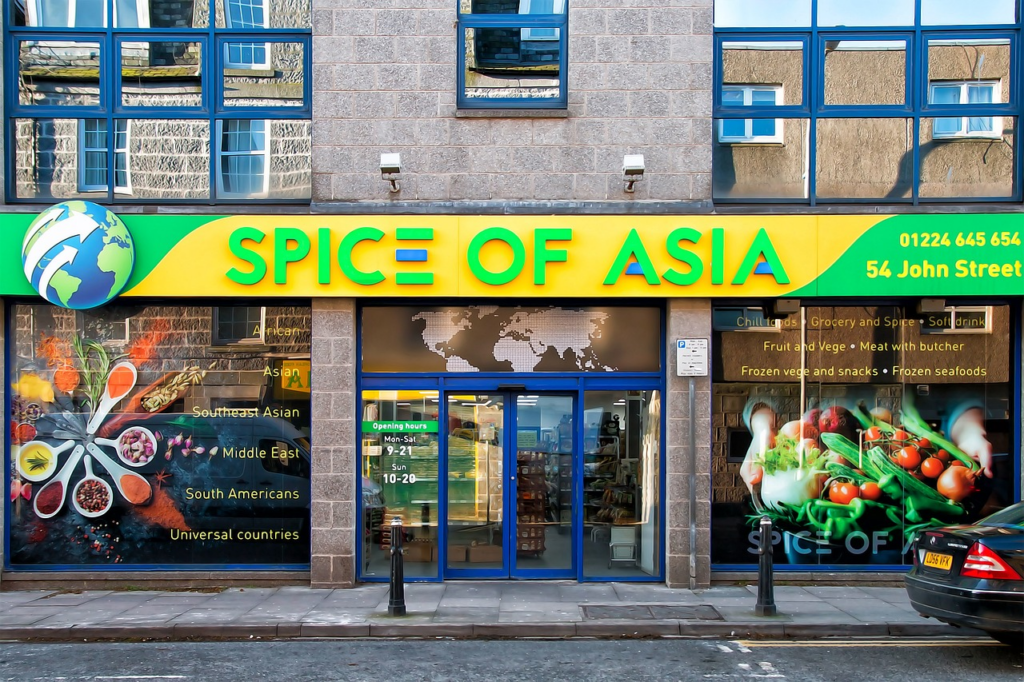
3. Say no to typical tourist souvenirs
Leave behind the cliché Loch Ness Monster souvenirs and touristy bagpipes on your Scotland Tour. Our partners are committed to uncovering hidden gems and connecting you with authentic Scottish handicrafts. From exquisite tartan scarves to intricate jewelry, discover treasures crafted by local artisans, directly supporting their creativity.
In urban landscapes, stray from the tourist traps to explore independent boutiques showcasing the work of Scottish designers and artisans. Alternatively, delve into vibrant street markets brimming with delectable culinary delights. In rural retreats, our partners may arrange exclusive visits to artists’ studios and workshops, providing insight into traditional craftsmanship and allowing you to acquire one-of-a-kind pieces with a meaningful story behind them.
4. Packing insights
Scotland’s unpredictable yet generally temperate climate adds an element of excitement to your adventures, keeping you on your toes with its ever-changing nature. Picture a splendidly sunny morning giving way to dramatic, brooding skies by afternoon. Even in early spring, the Highlands might surprise you with a dusting of snow, while late autumn might gift you with a few gloriously warm days, allowing you to forego your jacket until evening falls.
However, if your Scotland tour involves train travel, it’s wise to pack light. Most opt for casual attire in the evenings, ensuring comfort as they unwind after a day of exploration.
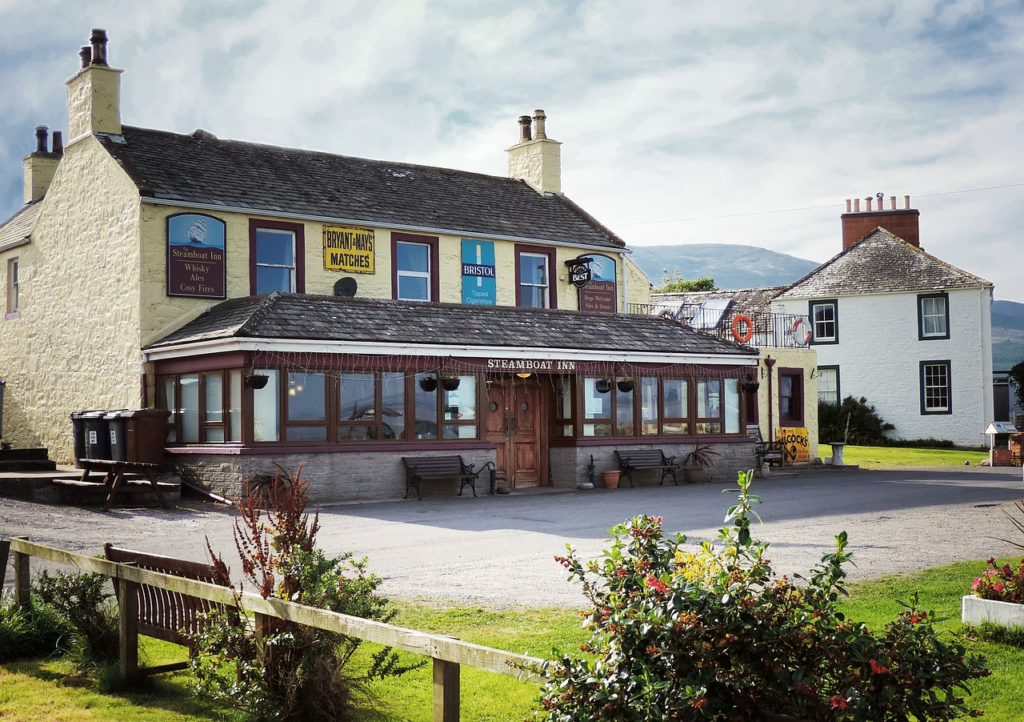
5. Different types of accommodation
Accommodation Tips in Scotland:
When planning your stay in Scotland, you’ll find a variety of accommodation options catering to different preferences and budgets. On private tours Scotland, have the freedom to choose your stay as per your choice. Here’s a breakdown of the types of lodging available and some tips for booking the perfect accommodation:
Hotels:
- Scotland boasts a wide range of hotels, from luxurious five-star establishments to cozy boutique hotels.
- Consider the location of the hotel. Do you prefer to stay in the heart of the city for easy access to attractions and dining options, or are you looking for a peaceful countryside retreat?
- Look for amenities such as complimentary breakfast, Wi-Fi, parking, and on-site dining options to enhance your stay.
Guesthouses/B&Bs:
- Guesthouses and bed and breakfasts offer a more intimate and personalized experience, often with charming decor and home-cooked meals.
- Research the location of the guesthouse. Many are situated in picturesque villages or rural settings, providing a tranquil escape from city life.
- Check guest reviews to ensure the quality of service and cleanliness meets your expectations.
Self-Catering Accommodations:
- For those seeking flexibility and independence, self-catering accommodations such as holiday cottages, apartments, or lodges are ideal.
- Consider the amenities provided, such as a fully-equipped kitchen, laundry facilities, and outdoor space.
- Look for properties located near local amenities and attractions to make the most of your stay.
Hostels:
- Hostels are a budget-friendly option, particularly popular among backpackers and solo travelers.
- Pay attention to the location of the hostel, as some may be centrally located while others are more remote.
- Check the availability of private rooms or shared dormitories, as well as facilities such as communal kitchens, social areas, and organized activities.
6. Pack for all seasons, not one!
There’s a popular joke circulating that Scotland’s great summer happened last year – and it fell on a Wednesday. It’s a playful jab, but it holds a grain of truth: Scotland’s weather is like a whirlwind of seasonal changes, where summer days can be a mix of wet, wild, and stunning all at once.
For the most reliably sunny and dry weather, consider visiting in May, early June, or September. However, if you don’t mind the gray skies, any time of the year will suit you just fine.
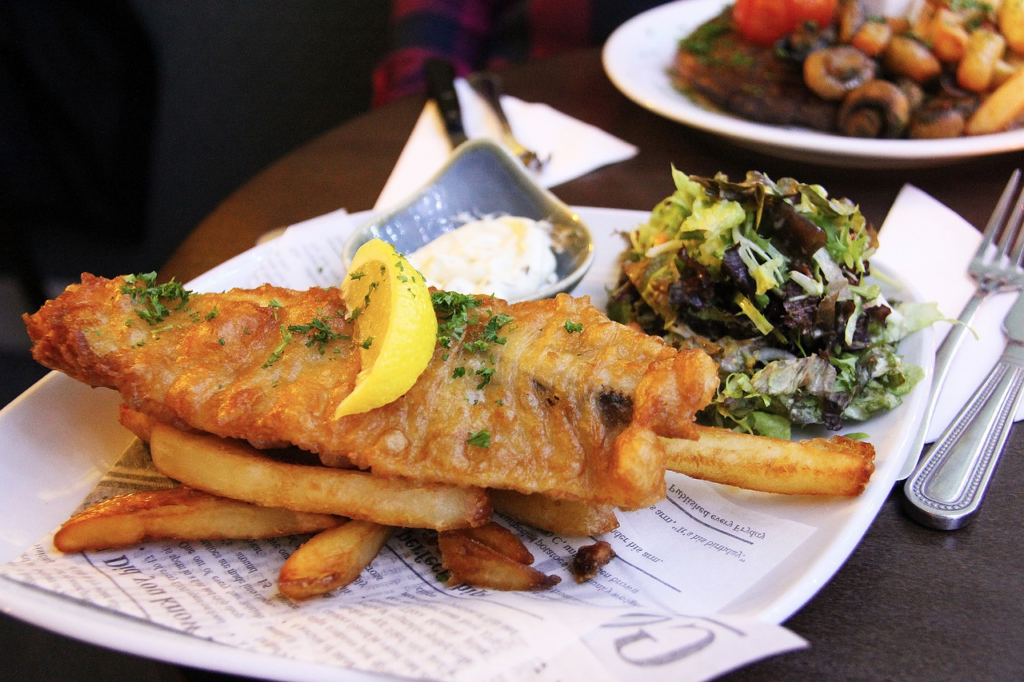
7. Food, a lot of it!
Dining Experiences in Scotland:
Scotland’s culinary scene is as diverse as its breathtaking landscapes, offering a tantalizing array of flavors and dining experiences. Here’s a glimpse into the rich tapestry of Scottish cuisine and where to indulge in authentic meals:
Traditional Dishes:
- Haggis: Scotland’s national dish, haggis is a savory pudding made from minced sheep’s pluck (heart, liver, and lungs), mixed with oatmeal, suet, spices, and onion, all encased in sheep’s stomach.
- Scotch Broth: A hearty soup made with lamb or beef, barley, root vegetables, and herbs, Scotch broth is a comforting and nourishing dish enjoyed especially during the colder months.
- Cullen Skink: A creamy and comforting smoked haddock soup, Cullen Skink hails from the coastal town of Cullen in northeast Scotland, showcasing the country’s bounty from the sea.
- Cranachan: A delightful dessert made with whipped cream, raspberries, toasted oats, and a splash of whisky, Cranachan is a celebration of Scotland’s natural ingredients.
Where to Find Authentic Scottish Meals:
- Traditional Pubs and Gastropubs: Pubs across Scotland often serve up classic dishes like fish and chips, steak and ale pie, and of course, haggis, neeps, and tatties (haggis with mashed turnips and potatoes).
- Local Restaurants and Cafés: Explore local eateries to discover regional specialties and innovative twists on traditional dishes. From cozy cafés serving homemade soups and sandwiches to fine dining establishments showcasing Scotland’s finest produce, there’s something to suit every palate.
- Farmers’ Markets and Food Festivals: Immerse yourself in Scotland’s culinary culture by visiting farmers’ markets and food festivals, where you can sample artisanal cheeses, freshly baked goods, and locally sourced meats and seafood.
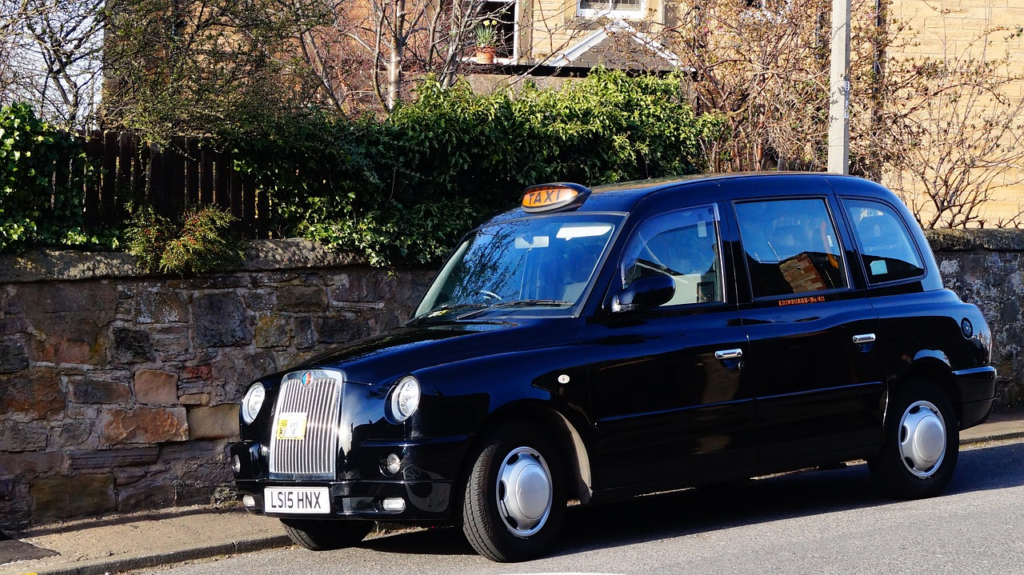
8. Moving Around
Navigating Transportation in Scotland:
Scotland offers a variety of transportation options to help you explore its stunning landscapes and historic cities. Here’s a guide to getting around:
Trains:
- Scotland’s rail network connects major cities and towns, offering a convenient and scenic way to travel.
- ScotRail operates most train services within Scotland, with routes linking Edinburgh, Glasgow, Aberdeen, Inverness, and more.
- Advance booking is recommended for long-distance journeys, especially during peak travel times.
Buses:
- Bus services provide extensive coverage across Scotland, including rural areas not served by trains.
- City buses are a convenient way to navigate urban centers like Edinburgh and Glasgow, with frequent services and multiple routes.
- National Express and Megabus operate long-distance coach services connecting major cities and towns across the UK, including routes to Scotland.
Rental Cars:
- Renting a car gives you the freedom to explore Scotland’s remote corners and scenic routes at your own pace.
- Major car rental companies have branches at airports and city centers, offering a wide range of vehicles to suit your needs.
- Keep in mind that driving in Scotland involves navigating single-track roads, winding mountain passes, and narrow lanes in rural areas.
Navigating Public Transportation:
- Plan your journey in advance using online journey planners or mobile apps provided by transportation operators.
- Purchase tickets in advance whenever possible to save time and avoid queues at ticket counters.
- Familiarize yourself with fare structures, as some routes may offer discounts for advance bookings or off-peak travel.
- Check for any service disruptions or engineering works that may affect your journey, especially on weekends and public holidays.
Planning Scenic Drives:
- Scotland’s scenic routes, such as the North Coast 500 and the Argyll Coastal Route, offer breathtaking landscapes and hidden gems waiting to be discovered.
- Research driving routes and attractions along the way to make the most of your journey.
- Take breaks at scenic viewpoints, historic sites, and charming villages to soak in the beauty of the Scottish countryside.
- Keep in mind that some rural roads may be narrow and winding, so drive cautiously and be prepared for unexpected encounters with wildlife.
By utilizing Scotland’s transportation options effectively and planning scenic drives through its picturesque countryside, you’ll be able to experience the best that this captivating country has to offer.
9. Handling Emergencies in Scotland
Traveling in Scotland can be an enriching experience, but it’s essential to be prepared for emergencies or unexpected situations. Here are some practical tips:
Emergency Services:
- In case of emergencies, dial 999 for police, ambulance, or fire services.
- If you require non-emergency assistance, dial 101 to contact the police.
- Save important numbers, including your country’s embassy or consulate, in your phone or write them down in a travel notebook.
Healthcare:
- Scotland’s healthcare system provides emergency medical treatment to all visitors, regardless of nationality.
- If you need medical assistance, visit a local hospital Accident and Emergency (A&E) department or call NHS 24 at 111 for non-emergency medical advice.
- Consider purchasing travel insurance that covers medical emergencies, including repatriation if necessary.
Safety Precautions:
- Stay informed about local safety guidelines and regulations, especially when engaging in outdoor activities or visiting remote areas.
- Carry a fully charged phone and a portable charger with you at all times, especially when exploring rural or less populated areas.
- Keep valuables secure and be cautious of pickpockets, especially in crowded tourist areas.
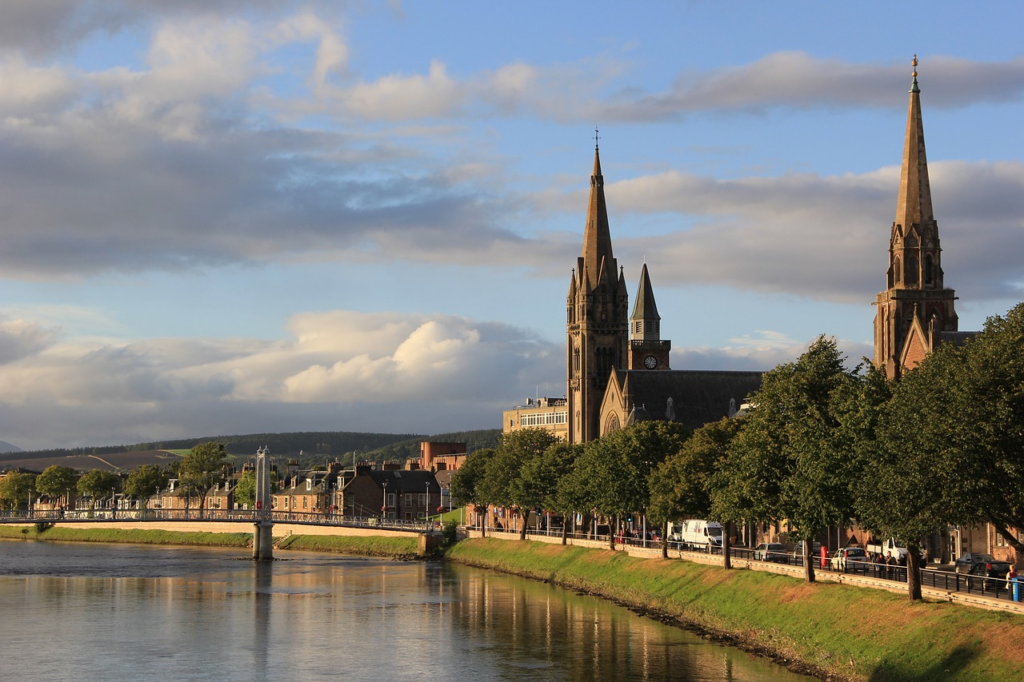
Conclusion
Scotland’s charm extends beyond its breathtaking landscapes and historic sites – it’s also reflected in the warmth and friendliness of its people. Embracing Scottish hospitality is key to creating a memorable travel experience:
- Connect with Locals: Engage with locals in conversations, whether it’s at a pub, a café, or a scenic viewpoint. Scots are known for their friendliness and love to share stories and recommendations with visitors.
- Try Local Cuisine: Explore Scotland’s culinary delights, from traditional dishes like haggis and whisky to fresh seafood and artisanal cheeses. Dining in local pubs and restaurants is not just about the food; it’s an opportunity to experience Scottish culture and hospitality firsthand.
- Seek Authentic Experiences: Venture off the beaten path to discover hidden gems and lesser-known attractions. Whether it’s attending a traditional ceilidh, exploring a historic castle, or hiking in the Highlands, immersing yourself in Scotland’s culture and heritage will enrich your travel experience.
By embracing Scottish hospitality and immersing yourself in the warmth and friendliness of its culture, you’ll not only create lasting memories but also forge genuine connections with the people and places you encounter along the way. So, embrace the spirit of Scotland, and let its hospitality guide you on an unforgettable journey.


